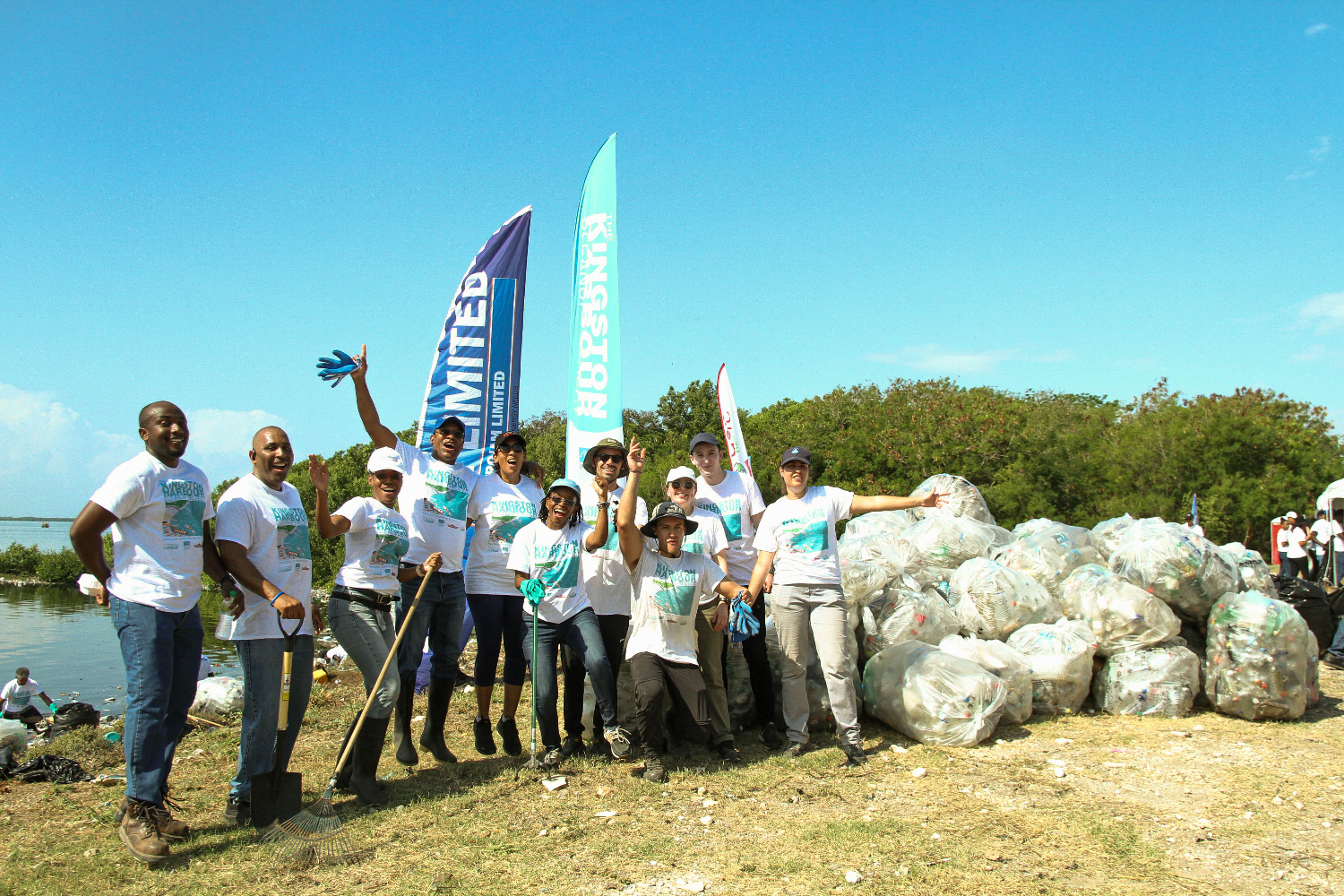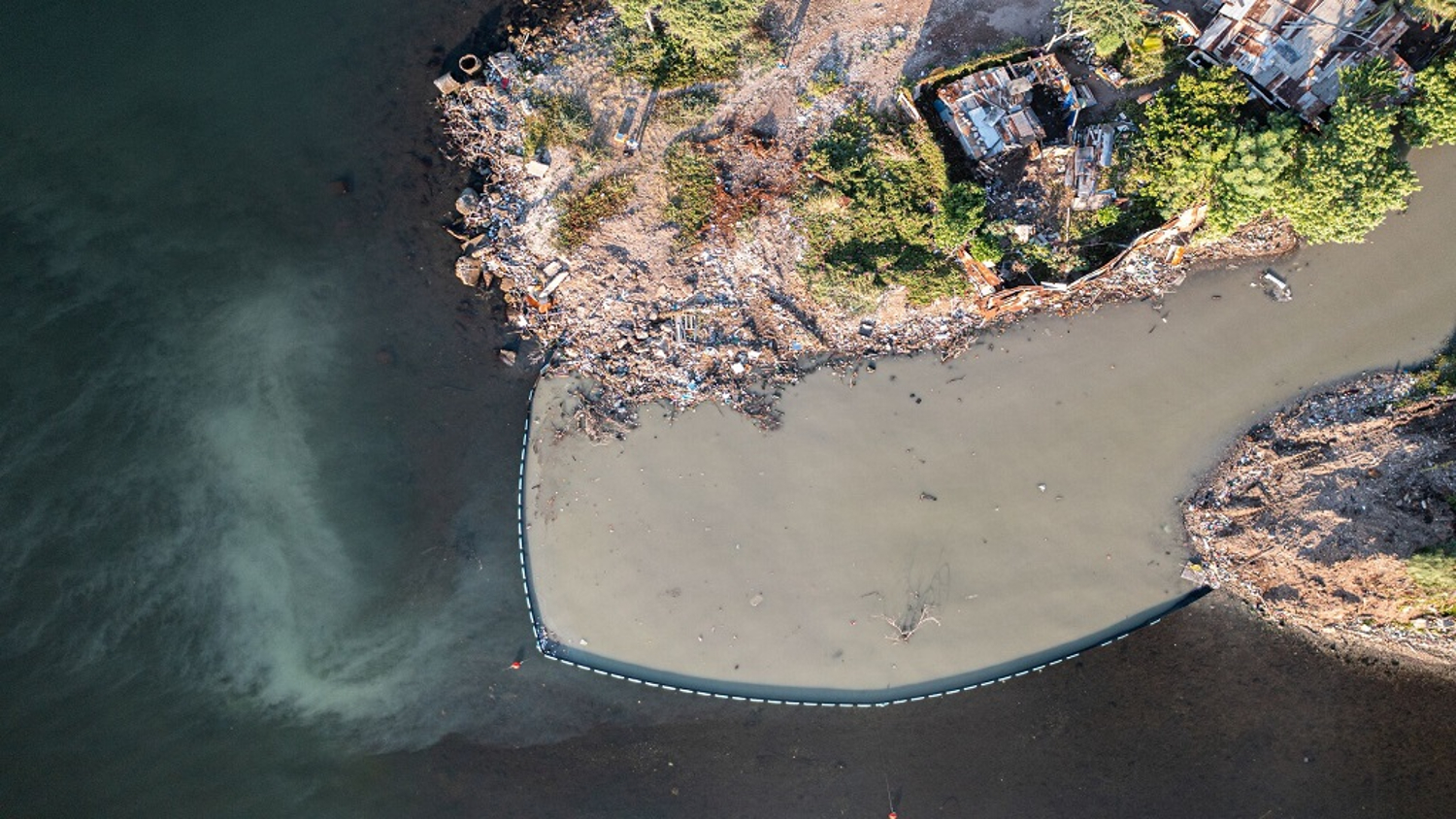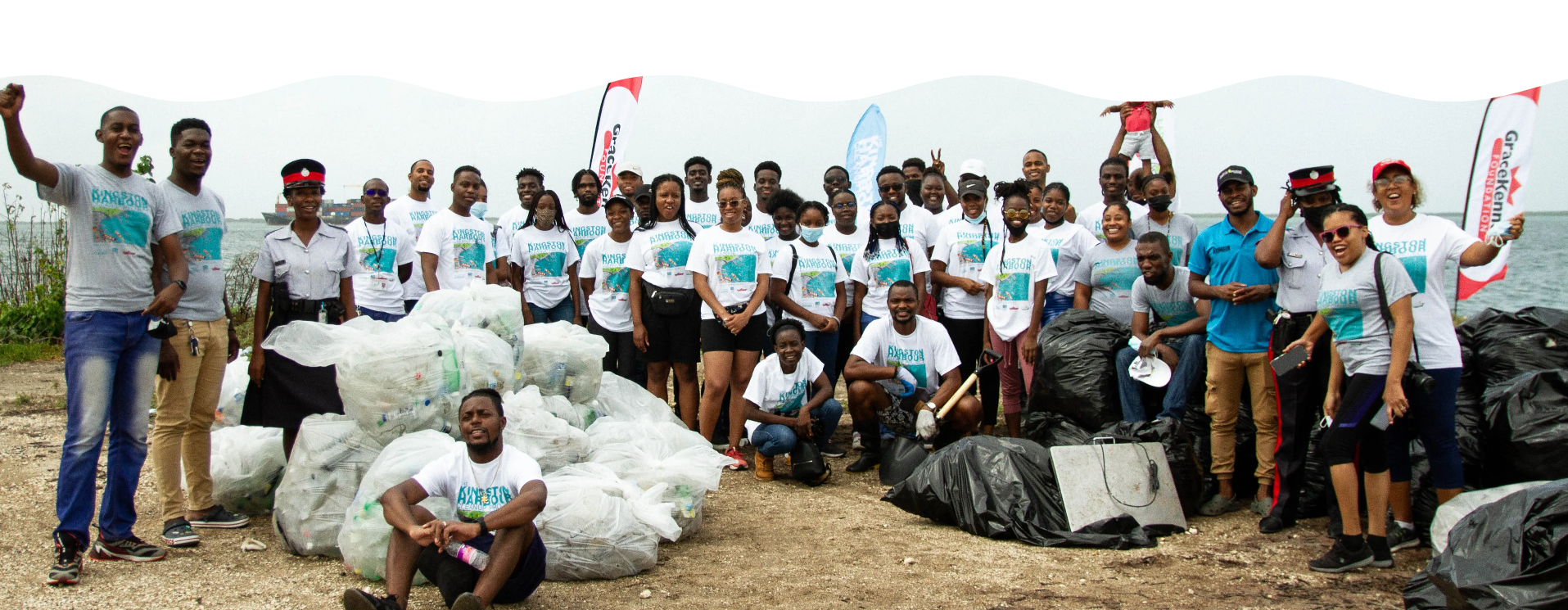Sign up for daily news updates from CleanTechnica on email. Or follow us on Google News!
Jamaica is much celebrated in songs and literature, from Harry Belafonte’s hauntingly beautiful Jamaica Farewell to Jimmy Buffett’s satirical Jamaica Mistaica. The island is one of the most beautiful in all the Caribbean, and home through the ages to pirates, poets, and potentates of all stripes. It is populated by a pastiche of people from all over the world who ventured there during the golden age of sailing ships, intermarried, intertwined, and created perhaps the most diverse gumbo of humanity to found anywhere on Earth. And yet, Jamaica suffers from the same curse as every other enclave of human civilization — pollution, much of it from plastics.
Jamaica & The Curse Of Plastics

Courtesy of Clean Kingston Harbor
The stuff sluices down the many valleys and gullies that surround Kingston harbor, the seventh largest in the world at 10 miles long and 2 miles wide. From there, it gets carried out to sea by the tide. Up until the 1980s, there was an annual cross harbor swimming contest, but the water became too full of trash for it to continue. Now the Kingston Harbor Cleanup Project is using technology developed in the Netherlands to return the harbor to its former glory.
The group has installed floating barriers at the mouth of several gullies, which are part of the area’s stormwater management system. As the water drains down from above, it brings trash with it. Anything that floats is trapped by the booms. A solar-powered boat collects the captured trash and brings it ashore to be sorted.
“Things that can be recycled are picked up by the Recycling Partners of Jamaica, and the Carib company [Caribbean Cement Company] re-uses those that cannot be recycled,” operations manager Alecia Rose-Beaufort told The Guardian. “So far, we have two types of solutions — barriers meant for deep waters with larger surface area and those meant for more shallow waters such as this gully beside our headquarters.”
The project currently covers three gullies, and there are plans to expand to other locations in Jamaica such as Montego Bay. “We’ve had an outpouring of requests, which shows that they need something like this. It’s scalable and sustainable locally and internationally,” said Michael McCarthy, managing director of Clean Harbors Jamaica. If this project shows it can work, he says, it has potential for other coastal cities around the Caribbean.
Government & Community Support For Jamaica Clean Up
A key part of the project is the partnerships created with the office of the prime minister, the Port Authority of Jamaica, the National Environment and Planning Agency, and fishery workers from Rae Town and Port Royal. Schools bring their students for educational tours. Community members are recruited as staff, but also taught new maritime skills and given the chance to improve on the existing ones they already have. Furthermore, it trains local residents about the importance of the environment and waste management. Some decide to become tour guides certified under Jamaica’s Tourism Enhancement Fund.
“If community members don’t view it as their own initiative, success is much lower. We need them to care, protect and report on what’s going on, so we established the environmental warden program,” said Caroline Mahfood, CEO of the GraceKennedy Foundation, which has a history of charitable and environmental initiatives. GraceKennedy, the consumer foods company that set up the foundation, wants to reduce waste and reinforce its ties to downtown communities. “The funding for this project isn’t about behavioral change, it’s about the technology. But we wanted to add more because we felt it would be critical to the success,” said Mahfood.
The Ocean Cleanup Lends A Hand

Courtesy of Clean Kingston Harbor
Jamaica is working with The Ocean Cleanup, a nonprofit environmental engineering organization based in the Netherlands and founded by Boyan Slat. It has global ambitions to address ocean pollution, particularly the massive collection of floating debris in the middle of the Pacific Ocean that is three times larger than France. So far, Slat’s ambitions have seen only modest success. Its floating booms are often damaged by waves and transporting the trash collected to shore is proving to be more expensive than expected.
Not only that, once it arrives on land, the trash collected has limited commercial value, making the business model a challenge. But Slat is optimistic. “I believe we can use this trash to turn a problem into a solution by transforming this unique material into a beautiful product,” he said in 2020. After the challenges of plucking trash out of the ocean, he changed his focus to keeping trash from getting into the oceans in the first place by capturing it at the mouth of hundreds of rivers around the world.
To accomplish that, Ocean Cleanup is building a fleet of solar-powered boats it calls Interceptors specifically designed to capture trash within the narrow confines of estuaries. They are so highly developed, they can actually remove microplastics from the water along with water bottles and other floating junk. The smaller solar-powered boat being used in Kingston Harbor in Jamaica is an offshoot of that project.

Courtesy of Clean Kingston Harbor
The Kingston Harbor initiative, with its backing by the local government and the GraceKennedy Foundation, is not dependent on making a profit. It would like to share its success with other communities in the Caribbean as well. “We’ve had an outpouring of requests, which shows that they need something like this. It’s scalable and sustainable locally and internationally,” McCarthy said. He believes if this project is proven to work in Jamaica, it could work for other coastal cities, too.
McCarthy said an expansion of the project will see anther barrier deployed in a matter of weeks. In times of climate crisis, he considers that developing new technologies is essential, especially given the risk of flash floods in the rainy seasons, when the volume of waste washed into the gullies is continually rising.
The Takeaway
The example of Kingston Harbor is both a tribute to human ingenuity and a condemnation of an economic system that allows gigantic corporations to avoid paying ten cents to clean up the mess they make when their products are discarded. The corollary to that is that, thanks to a system of government that allows them to have the ear of lawmakers and policy makers while ordinary citizens are denied the same privilege, leads to this ridiculous situation in which charitable organizations and taxpayers have to pay to clean up after those companies who are pocketing billions in profits.
Clearly the only solution is to make polluters pay, not just the bottling companies like Nestlé and CocaCola, but the manufacturers who make those bottles, food containers, and plastic bags in the first place. It’s astonishing how many people don’t see the logic behind that idea — largely because it is against their self interests to do so.
Have a tip for CleanTechnica? Want to advertise? Want to suggest a guest for our CleanTech Talk podcast? Contact us here.
EV Obsession Daily!
I don’t like paywalls. You don’t like paywalls. Who likes paywalls? Here at CleanTechnica, we implemented a limited paywall for a while, but it always felt wrong — and it was always tough to decide what we should put behind there. In theory, your most exclusive and best content goes behind a paywall. But then fewer people read it!! So, we’ve decided to completely nix paywalls here at CleanTechnica. But…
Thank you!
Tesla Sales in 2023, 2024, and 2030
CleanTechnica uses affiliate links. See our policy here.





